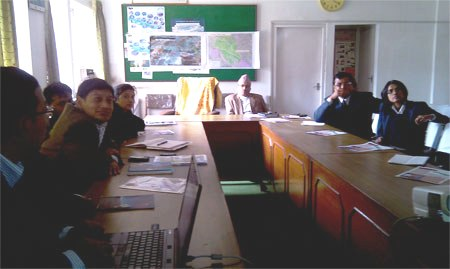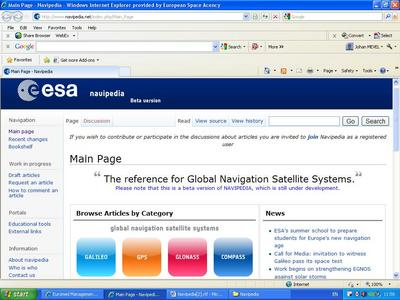The regional GLONASS centre will be processing information received from school buses, health-care vehicles, and trucks transporting hazardous cargo. In the long run, the system is expected to secure safety of transportation services as such.

Mr. Basanta Shrestha gave introductory remarks on the system and highlighted its usefulness in the Nepalese context. Mr. Sudip Pradhan presented and demonstrated the MODIS based forest fire detection and monitoring system to the attendants. The Honorable Secretary and other officials showed keen interest in the system and decided to subscribe for fire alerts.
Earlier he attended the ‘Curtin Sarawak Malaysia (CSM) University-DBNA roadshow’ that was launched by the association advisor and also Infrastructure Development and Communication Minister, Dato Sri Michael Manyin. Highlighting that the self-initiative is already a proven success to those who had taken the effort, Ik Pahon encouraged all communities throughout the state to start their survey as well.
The project has been made possible through funding from the National VET E-learning Strategy, whose Peak Industry Bodies Programs sponsors the adoption of e-learning growth opportunities at the level of whole industries through their peak bodies or associations.
Avenza Systems Inc., producers of MAPublisher® cartographic software for Adobe Illustrator® and PDF Maps for Apple iOS, has announced the release of Geographic Imager 3.5 for Adobe Photoshop. This release is encompasses new support for import and export of spatial imagery formats.
iLOC Technologies Inc. (iLOC) has announced the upcoming launch of its newest product, the TRiLOC™ GPS locator. Over 2 years of research resulted in a unique blend of cellular, GPS and Bluetooth 4.0 wireless technologies, while maintaining an aesthetic design, simplicity and long battery life.
Spatial data underlies everything an electric utility does. An intelligent power grid requires deep situational awareness of power generation, transmission, distribution, and customer assets in order to optimize performance and to meet reliability commitments.
2 April 2012 NBN Co have entered into an agreement pursuant to which NBN Co will use Australia’s geocoded national address file, G NAF, for address information to support the planning, roll-out and operation of the national broadband network. The address information provided by G NAF will be used to support NBN Co’s business.
Intergraph’s commitment to open interfaces and standards. SmartPlant P&ID ISO 15926 Export Utility offers data exchange benefits between the process design schematics and the 3D physical design for engineering companies, as well as facility owners.












 (5.00 out of 5)
(5.00 out of 5)